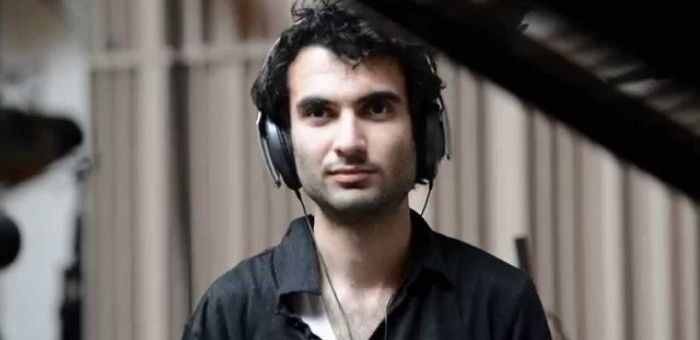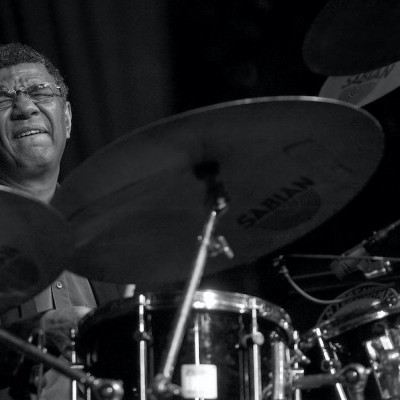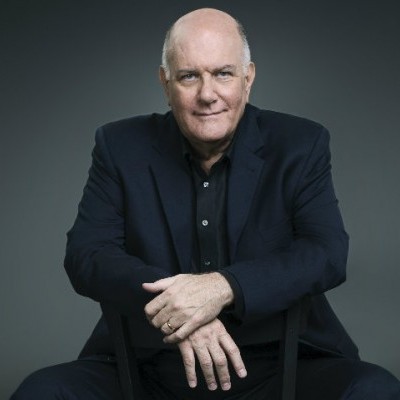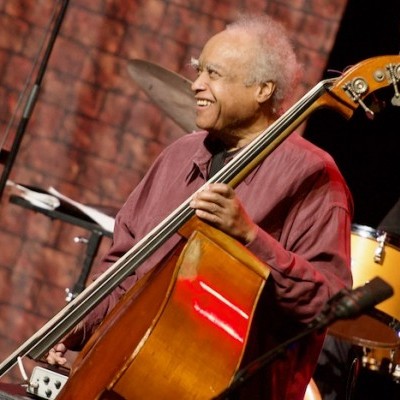Oct 28, 2025 10:47 AM
In Memoriam: Jack DeJohnette, 1942–2025
Jack DeJohnette, a bold and resourceful drummer and NEA Jazz Master who forged a unique vocabulary on the kit over his…

Tigran Hamasyan performed at SubCultre in NYC on March 10. At points throughout his show, the pianist layered wordless vocals that sounded other-worldly in pitch.
(Photo: Courtesy of the artist)On the end of his five-city U.S. tour, pianist Tigran Hamasyan returned to New York (where he had lived briefly years ago) to take the stage at SubCulture for two exhilarating—and in turns mystical—solo sets on March 10.
He packed the house during the first show, and the line stretching up the stairs into the lobby and onto Bleecker Street in the East Village indicated that the second show would be equally as full. Not bad for an artist who swims in rivers separate from—though parallel to—mainstream jazz.
It probably has something to do with the fact that Hamasyan was born in Armenia, having returned to his homeland recently after years in New York and L.A. Still, given that he won the Thelonious Monk Institute 2006 piano competition as well as several other European awards, you’d think he’d be more widely known in the U.S. (granted, he’s a hero in Europe.) That didn’t matter to the young and diverse crowd that came to cheer and at times hoot the singularly styled Hamasyan.
The soon-to-turn 30-year-old is a unique jazz amalgamator, with strong influences including classical, hip-hop, heavy metal, electronica and Armenian folk music, which in pockets inform his surprising and exciting virtuosic and groove-oriented improvisations. His strongest asset is his melodicism, a dominating factor in his SubCulture show, in which he performed music from his latest album, An Ancient Observer, his sophomore recording for Nonesuch and his second solo launch.
Hamasyan opened with his back to the audience as he noodled on an electronic keyboard in lyrical fashion, church-like in its quiet, then scarred by electronica scrapes. As he did throughout the rest of the show, on “New Baroque 2,” he layered wordless vocals that at certain times sounded other-worldly in pitch.
With a one-note electronic bass note drone, he sat at the piano for the charged, classical-like “Fides Tua,” dipping his head almost to the keys for the gentle melodicism and then jolting straight up when he took his crowd-pleasing hard drive. The pattern of ascending energy continued through the show, as rhythmic contemplation burst into fired ecstasy on “The Cave Of Rebirth,” which contained a stretch that sounded vaguely as if he were backmasking (he wasn’t).
The highlight of the early set was the title track that started sober then galloped into a louder and faster dynamic, with left-hand eruptions balanced with right-hand lyricism and a stutter of chords with both hands. With all the changes, there was a sense of reverence in the tune. No swing, no intellectualism but lots of movement. His percussive rhythms danced into a rock beat over a speedy vocal scat, prompting the crowd to yelp at the end.
One of the key elements that enlightens his music is his exploration of ancient Armenian folk tunes, which are often reconfigured into metal-meets-jazz arrangements. That came to the fore on “Nairian Odyssey,” fueled by two Armenian melodies that calmed the pianist before he took off into a fingers-blurred journey with fluctuating speeds and McFerrin-like vocalese.
The song in particular was vibrant in a uniquely jazz way—safe for jazzophiles listening for something virtuosic but equally accessible to rockers looking for speedy rides. After another electronica interlude, Hamasyan ended with the whimsical “Markos And Markos,” which started with a playful piano skip developing into sharp-fingered vignettes taken at canter speed. Dreaminess and a dark hipness were in the mix as Hamasyan flew through different modes of expression. This awarded him with a standing ovation that resulted in the short but spiritually charged “Egyptian Poet.” He introduced the song by describing how it was inspired by a poem written in 2000 B.C.
“I found this book of a poetry collection at a used book store in Armenia where all the titles were like 30 cents a piece,” he told the crowd. “I was expecting poetry from the ancient Middle East or medieval Persia, but on the first page there was this poem. Funny thing is, what he was writing about is exactly what we‘re facing in the 21st century. Nothing has changed, except back then the people were more spiritual.”
This song was accordingly transcendent, Hamasyan’s way of capping the evening with a blessed “amen.” DB

Jack DeJohnette boasted a musical resume that was as long as it was fearsome.
Oct 28, 2025 10:47 AM
Jack DeJohnette, a bold and resourceful drummer and NEA Jazz Master who forged a unique vocabulary on the kit over his…

D’Angelo achieved commercial and critical success experimenting with a fusion of jazz, funk, soul, R&B and hip-hop.
Oct 14, 2025 1:47 PM
D’Angelo, a Grammy-winning R&B and neo-soul singer, guitarist and pianist who exerted a profound influence on 21st…

Kandace Springs channeled Shirley Horn’s deliberate phrasing and sublime self-accompaniment during her set at this year’s Pittsburgh International Jazz Festival.
Sep 30, 2025 12:28 PM
Janis Burley, the Pittsburgh International Jazz Festival’s founder and artistic director, did not, as might be…

Jim McNeely’s singular body of work had a profound and lasting influence on many of today’s top jazz composers in the U.S. and in Europe.
Oct 7, 2025 3:40 PM
Pianist Jim McNeely, one of the most distinguished large ensemble jazz composers of his generation, died Sept. 26 at…

Drummond was cherished by generations of mainstream jazz listeners and bandleaders for his authoritative tonal presence, a defining quality of his style most apparent when he played his instrument unamplified.
Nov 4, 2025 11:39 AM
Ray Drummond, a first-call bassist who appeared on hundreds of albums as a sideman for some of the top names in jazz…